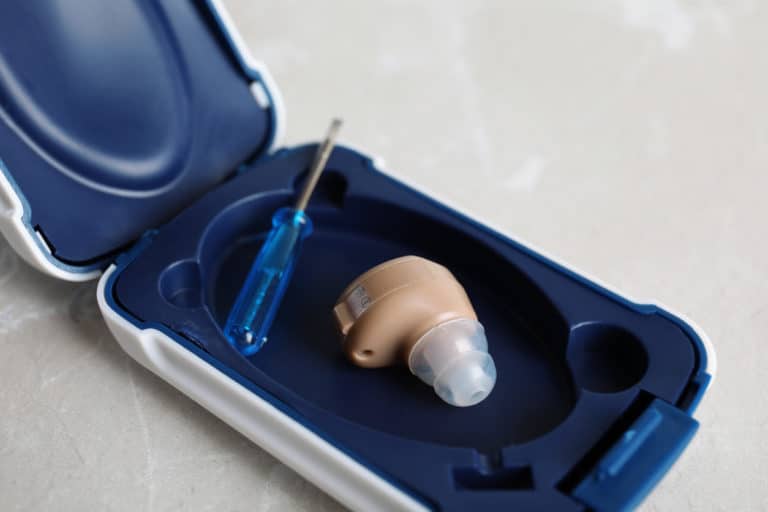Hearing aids are a big investment. Aside from the cost of the devices, you’ve invested the time to get a hearing test, worked with your audiologist to make a selection, had them fitted and returned for reprogramming. It seems like right when you get things dialed in is when disaster strikes.
Below are some common hearing aid “disasters” and how to deal with them.
Dropping Your Hearing Aid Outside

During the winter months, you likely don a hat, headband or earmuffs to stay warn. If you wear behind-the-ear (BTE) hearing aids, it’s possible that your winter wear will get caught on them and pull them out of your ears.
If you notice your hearing aid is no longer in your ear, stop what you’re doing and ask the people around you to do the same. Start feeling around your head and neck – especially in your collar – and work your way down to find if your hearing aid is caught in your clothes somewhere. If you can’t find it, survey the ground around you, being careful where you step. Retrace your steps, paying extra attention to areas where you may have stopped or adjusted your clothes.
To prevent this from happening, you can invest in hearing aid clips to keep them on your body even if they fall out of your ears. There are also specially-designed earmold and ear grips to help keep them in place.
Dropping Your Hearing Aid Down the Drain
When putting your hearing aid in or taking it out, you might stand in front of the bathroom sink so you can see what you’re doing in the mirror. However, it’s all too easy to drop them and watch helplessly as they fall into the drain – or, unfortunately for some, the toilet.
If this happens, try to grab it as soon as possible. If it falls in the sink, don’t run the water. Use a pipe wrench to remove the p-trap from under the sink and retrieve it. If it falls in the toilet, evaluate the situation. If the water is clean, it is advisable to grab it quickly, as most hearing aids have a protective nano coating that can be disinfected. If it falls into a toilet with waste, the hearing aid is now considered a biohazard and should be disposed of as such.
Be careful where you stand when removing or inserting your hearing aids. If you must stand over the sink, lay a towel down so if it falls it is not damaged or lost. Make sure the toilet lid is closed, too.
For more information about hearing aid care or to schedule an appointment, call the Hearing Advancement Center.